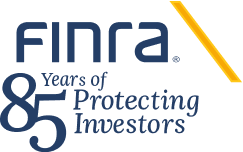Each year, FINRA publishes its Annual Risk Monitoring and Examination Priorities Letter to highlight issues of importance to FINRA's regulatory programs.
I am a small-account retail trader who frequently makes use of things like index and stock options and leveraged ETFs, and my comments are made from that admittedly limited perspective. A couple points.
1) Capital requirements are undemocratic and unjustifiable. Despite FINRA's attempts to close as many doors to the small retail trader as possible, trading remains a means to financial
The Cybersecurity and Technology Governance section of the 2021 Report on FINRA’s Risk Monitoring and Examination Activities (the Report) informs member firms’ compliance programs by providing annual insights from FINRA’s ongoing regulatory operations, including (1) relevant regulatory obligations and related considerations, (2) exam findings and effective practices, and (3) additional resources.
Raising additional barriers to entry different types of investments runs a serious risk of exacerbating economic inequality. Public knowledge of investing topics has increased dramatically over the last few years as access to the market has improved for general public. There will always be those who choose riskier investments and there will always be those who choose safer investments, but it
The Anti-Money Laundering (AML) section of the 2018 Report on Exam Findings informs member firms’ compliance programs by describing recent findings and observations from FINRA’s examinations, and, in certain cases, also providing a summary of effective practices.
<p>Permissibility of electronic approval of accounts under NASD Rule 3110(c)(1)(C). (Note: Underlining indicates redactions from original letter).</p>
GUIDANCE
Examination Fees
Implemention Date: January 1, 2005
SUGGESTED ROUTING
KEY TOPICS
Legal & Compliance
Registered Representatives
Senior Management
Examination Fees
Qualification Examinations
Registration
Schedule A to the NASD By-Laws
Executive Summary
NASD has filed for immediate effectiveness
<p>Member firms may pay retired registered representatives continuing commissions based on contributions to accounts established by the former representatives prior to retirement, provided the conditions of NASD IM-2420-2 are satisfied, and further, that such payments are made in compliance with SEC "no-action" letters addressing the permissibility of those payments under Section 15(a) of the Securities Exchange Act of 1934. Firms cannot pay retired registered representatives commissions based on activity in accounts established after the representatives' retirement.</p>
SUGGESTED ROUTING:*
Senior ManagementInstitutionalLegal & ComplianceOperationsResearchSyndicateSystemsTradingTraining*These are suggested departments only. Others may be appropriate for your firm.
EXECUTIVE SUMMARY
On March 10, the Securities and Exchange Commission (SEC) approved amendments to Schedule D regarding trade reporting for regular Nasdaq® equity securities. The trade
img.snapshot{border:1px solid #cccccc;margin-top:10px;}
.blueButton{
background-color: #1063A0;
color: #fff;
border-radius: 10px;
display: inline;
font-size: 14px;
max-width: 200px;
padding: 15px;
text-align: center;
text-transform: uppercase;
transition: all 0.3s ease-out;
width: calc(100% - 30px);
}
.blueButton a{color:#ffffff}
.Report_TOC{border:
